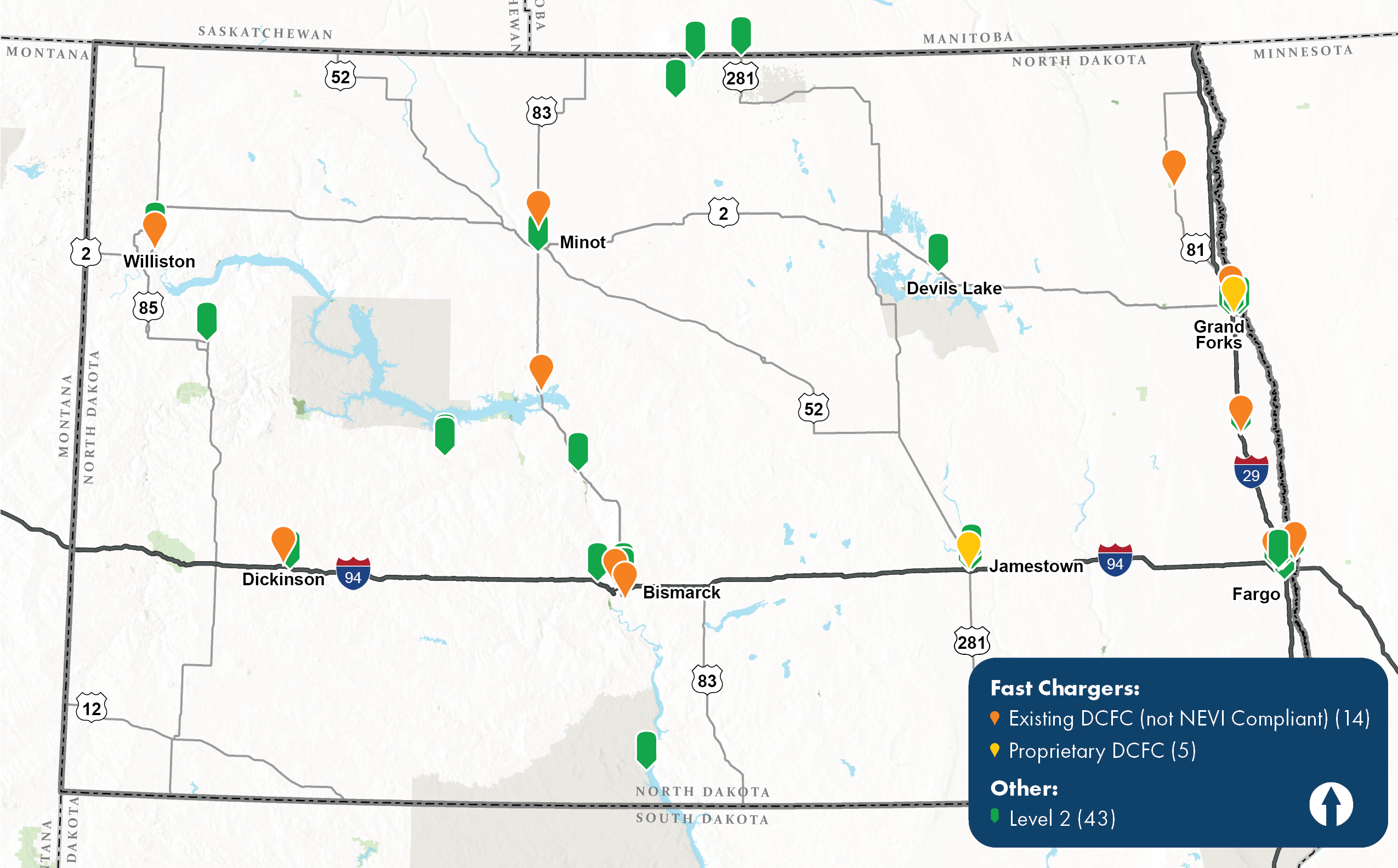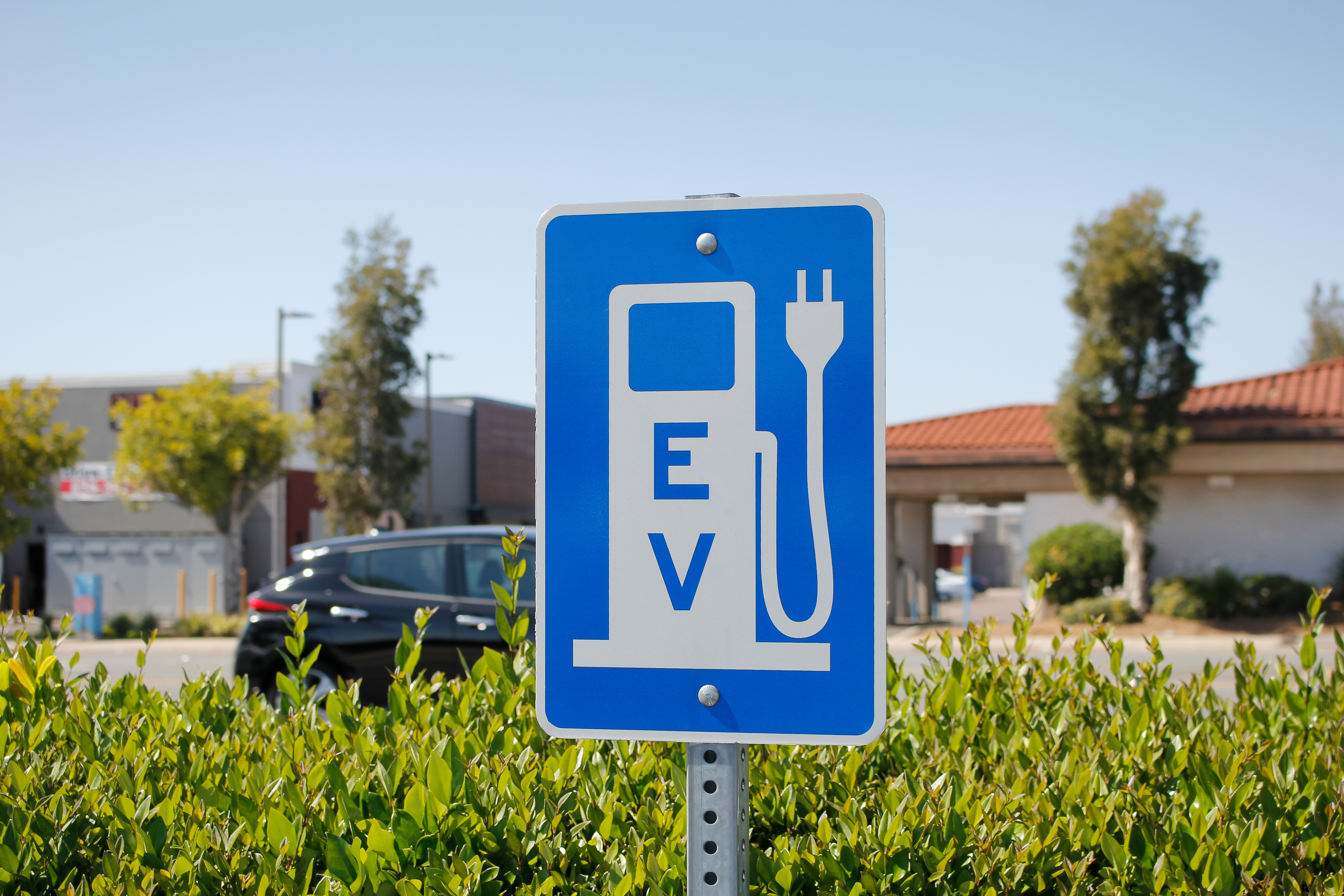
Welcome
Welcome to our Electric Vehicle Infrastructure Plan On-Demand Public Meeting
What is the Electric Vehicle Infrastructure Plan?
The North Dakota Department of Transportation (NDDOT) is preparing an Electric Vehicle (EV) Charging Infrastructure Plan. The Plan is a federal requirement to obtain National Electric Vehicle Infrastructure (NEVI) Formula Program funding from the 2021 Bipartisan Infrastructure Bill (BIL). The Federal NEVI Program is intended to create a network of EV fast chargers across the country that provides reliable and consistent infrastructure to support long distance travel. For North Dakota, the first phase of the program will build chargers along I-94 and I-29, with the later phase of the program focused on building chargers throughout the state.
How to navigate this on-demand meeting:
-
Click the arrows on the bottom of your screen to go forward or backward.
-
Use the navigation bar on the side of your screen to revisit any part of the meeting.
Results of the EV Infrastructure Plan
NDDOT is developing the statewide EV Infrastructure Plan with the assistance of partners and stakeholders around the state. Throughout the spring and summer of 2022, NDDOT will collect input from the public, partners, and stakeholders to help shape the plan. Once the plan is complete, it will provide a helpful analysis of where we are today, where we can go, and how to get there.
Types of EV Chargers
The EV Infrastructure Plan will focus on the placement of Direct Current Fast Chargers (DCFC) which are also known as Level 3 fast chargers. DCFC chargers provide a large amount of power to the vehicle’s battery in a short amount of time.
If the vehicle’s battery is a swimming pool, then the different charging levels are analogous to how fast we can fill the pool.
Most of the current chargers in North Dakota are Level 1 and 2, which support destination charging and are typically found in homes, workplaces, and commercial/public areas.
Level 1 Watering Can
- 1.4 - 1.9 kW
- 3-5 miles of range added per hour
Level 2 Garden Hose
- 2.5 to 19.2 kW
- 10-30 miles of range added per hour
Level 3 Fire Hose
- >50 kW (up to 350 kW)
- 2-10 miles of range added per minute (80% charge in 15-30 minutes)
EV Chargers in North Dakota
There are currently more than 380 EVs registered in North Dakota. Out of the 60+ EV chargers that currently exist in the state, none meet the power, location, and interoperability requirements of the NEVI program.

Federal Requirements for Funding
The EV fast charging plan is a requirement to obtain National Electric Vehicle Infrastructure (NEVI) Formula Program funding from the 2021 Infrastructure Investment and Jobs Act (IIJA).
NEVI Formula Program Requirements

Located no more than one mile from an alternative fuel corridor (AFC), typically a long stretch of a major highway or road.

Support up to four vehicles charging at 150kw simultaneously.

Open to all vehicle makes (non-proprietary).

Maximum 50 miles between charging stations.
North Dakota will receive approximately $25.9 million from the NEVI Formula Program through FY 2026.The NEVI Formula Program aims to provide a nationwide network of EV chargers that ensures a convenient, reliable, affordable, and equitable charging experience for all users. In the future, a national network of 500,000 charging stations is expected to be established throughout the United States.
The NEVI Formula Program aims to provide a nationwide network of 500,000 EV chargers by 2030 that ensures a convenient, reliable, affordable, and equitable charging experience for all users.
The $5 billion NEVI Formula Program will provide dedicated funding for states to strategically deploy EV infrastructure and establish an interconnected network to facilitate data collection, access, and reliability. Initially, funding under this program is directed to designated Alternative Fuel Corridors for electric vehicles to build out this national network, particularly along the Interstate Highway System. When the national network is fully built out, funding may be used on any public road or in other publicly accessible locations.
The Infrastructure Investment and Jobs Act (IIJA), aka Bipartisan Infrastructure Law (BIL), was signed into law by President Biden on November 15, 2021. The law authorizes $1.2 trillion for transportation and infrastructure spending with $550 billion of that figure going toward “new” investments and programs. Funding from the IIJA is expansive in its reach, addressing energy and power infrastructure, access to broadband internet, water infrastructure, and more. Some of the new programs funded by the bill could provide the resources needed to address a variety of infrastructure needs at the local level.
There are a variety of electric vehicle options on the market today. Some EVs operate solely on batteries, while others are hybrid models with both an electric motor and an internal combustion engine. The U.S. Department of Transportation provides an overview on the different types of EVs.
Thank you for your participation!
To be eligible for the Federal program, North Dakota will submit the EV Infrastructure Plan by August 1, 2022.
